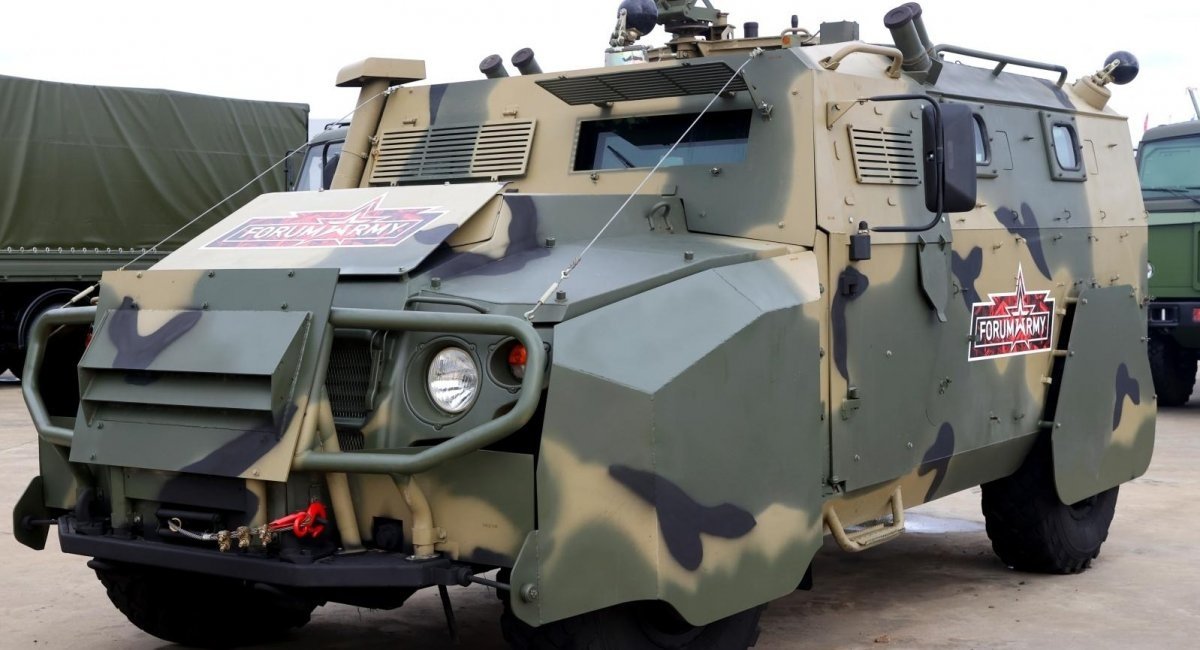The annual Armiya-2023 (Army-2023) military exhibition is an important event for the russians, in terms of both arms industry cooperation and propaganda, where various newly developed technologies are presented. However, this year's presentation was so lacking in diversity and novelties that they had to earn cheers by showcasing a kingdom of slat armor and Soviet-era equipment.
On that note, there still were some uniquely russian developments. For example, there was the Zubilo, positioned as an unmanned transport vehicle with a weight of 13.3 tons and a payload capacity of 2.7 tons.
Read more: russians Have So Much Faith in Their Advanced T-90M Tanks That Even Those Got 'Encaged' (Photo)

This product from Remdizel enterprise, Tatarstan, features no cameras whatsoever but a main weapon, the ZU-23-2 without sighting equipment, at least as shown on the exhibit. This causes doubts about the vehicle's capability to properly move around and shoot when needed.
The same issue regarding mobility applies to the new version of the Tigr armored military car as well. This upgraded variant has already become known for having trouble climbing up the hills and mounds as it features tougher, ergo heavier armor.

The vehicle got additional metal plates in front and enclosures for wheels which makes it reminiscent of the World War I military equipment (or some well-known feature movie in a post-apocalyptic setting).
Notably, the exhibition presents a variety of slat armor superstructures. The development of protective cages has apparently become a whole branch of industrial effort as we can see enhancements for all kinds of vehicles, ranging from traditional slats for tanks to more extravagant solutions for lighter transport vehicles.
The war in Ukraine became instrumental for this "branch" of arms development. Earlier we saw a T-90M tank covered in a heat signature-hiding Nakidka camouflage and a slat armor piece rising upon it making all the concealment effort useless. But apparently, the russians decided to pursue the path of adding the cages despite their shortcomings. One of the reasons for that may be the active deployment of attack drones in addition to heat-seeking missiles in the Ukraine War.

One of the exhibits shows a fully enclosed cage around the turret hatch. The advantages are disputable since this design causes ergonomic problems for the crew and effectively disables the machine gun turret trapped inside.
Another bar armor example is added to a wheeled personnel/cargo carrier, as shown below. The framework on top limits the vehicle's ability to move under bridges although may help against grenade drops from above.

An interesting piece was installed on an ambulance armored vehicle making it almost twice its size. The mesh protection on the sides is absent. Probably, the engineers didn't manage to finish the work in time before the exhibition.

Of course, there also was the T-14 Armata, the regular guest of all russian military shows. However, now it stands beside the T-62 which, unlike the unfinished T-14, managed to actually find its way to the russian army.

An element of surprise is provided by the Ka-50 attack helicopter in its black "for display" livery. This rotorcraft was created in Soviet times but didn't enter mass production because in the 1990s it turned out that a single pilot in this helicopter was unable to perform combat tasks effectively. Instead, the russians opted in favor of the tandem-seat Ka-52 helicopter.

The fact this exhibit is an old one is highlighted by the fact it carries the "VVS [air force] of russia" [ВВС России] inscription instead of VKS meaning "aerospace force" which replaced the former name in 2015.
But the lack of novelties at Armiya-2023 made russians put on display even such obsolete pieces: the Ka-50 performed its first flight back in 1982.
Read more: Three T-90M Proryv Tanks Destroyed While russians Attempt to Breach Ukrainian Defense Near Bakhmut














